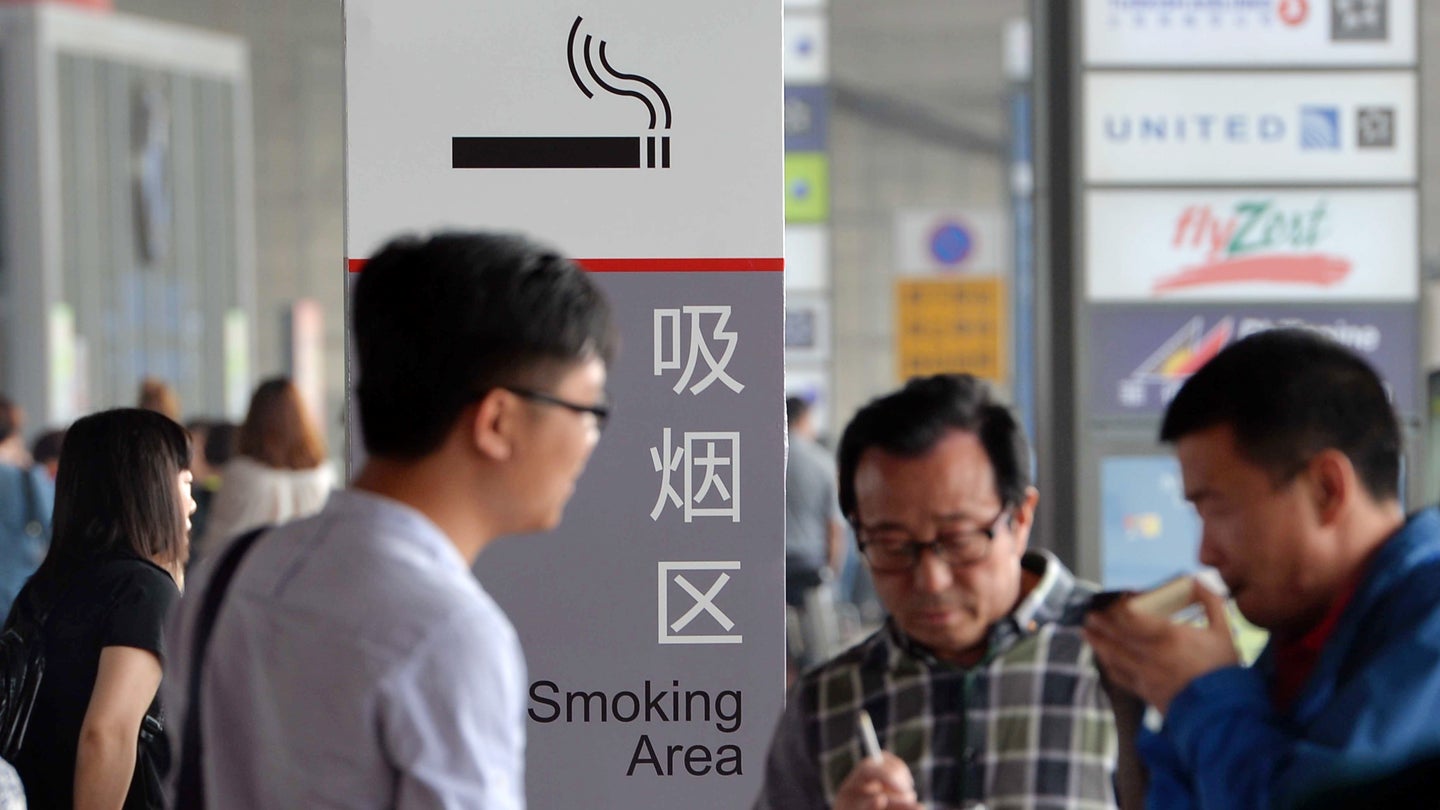Smoking Still Allowed at Majority of World’s Biggest Airports
Nonsmokers at risk of secondhand exposure at 27 of the 50 most heavily traveled airports, where 2.7 billion passengers pass each year, CDC says.

Air travelers and workers at 54 percent of the world's busiest airports are at risk of being exposed to secondhand smoke, which kills an estimated 41,300 Americans each year.
Of the 50 busiest airports, 27 allow smoking in designated or ventilated indoor areas such as restaurants, bars, or airline clubs, according to research released last week by the Centers for Disease Control and Prevention.
According to the CDC, secondhand smoke causes an estimated 34,000 heart disease deaths and 7,300 lung cancer deaths each year in the U.S.
“Separating smokers from nonsmokers, cleaning the air and ventilating buildings cannot eliminate exposure of nonsmokers to secondhand smoke,” said Brian King, deputy director for research translation in CDC's Office on Smoking and Health. “People who spend time in, pass by, clean or work near these rooms are at risk of exposure.”
More than 2.7 billion passengers annually pass through the airports examined by the federal agency, which said the report is its first assessment of smoke-free policies in the world's airports.
Of the 10 busiest airports on the globe, five have a smoke-free policy: Beijing Capital, Chicago's O'Hare International, London's Heathrow, Los Angeles International and Shanghai Pudong International. The remainder allow smoking in designated indoor areas. That includes Atlanta Hartsfield Jackson International, Dubai International, Hong Kong International, Paris's Charles de Gaulle and Tokyo International.
The study, which looked at policies in place in 2017, found smoke-free policies varied by region. In North America, 78 percent—14 of 18—of the busiest airports have a smoke-free policy; in Europe, it's 44 percent or four of nine; in Asia, the CDC found 18 percent, or four of 22, airports to be smoke-free, all four located in China.
Previously, the CDC found secondhand smoke can travel from designated areas into other parts of airports, exposing nonsmoking travelers and employees.
